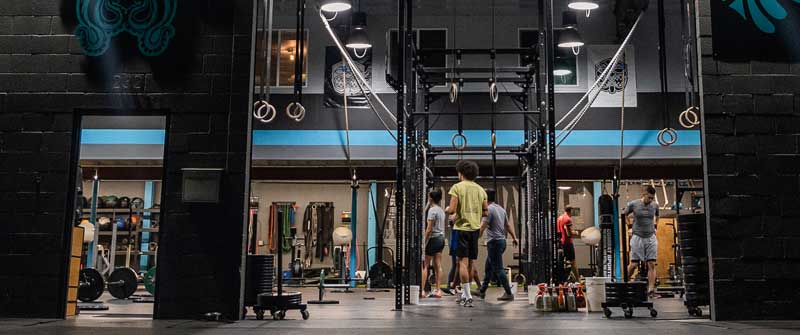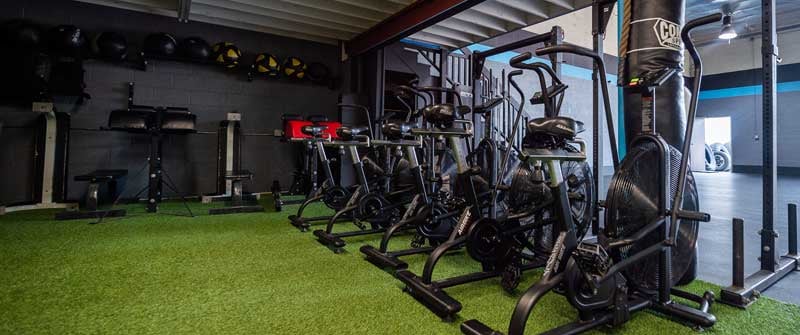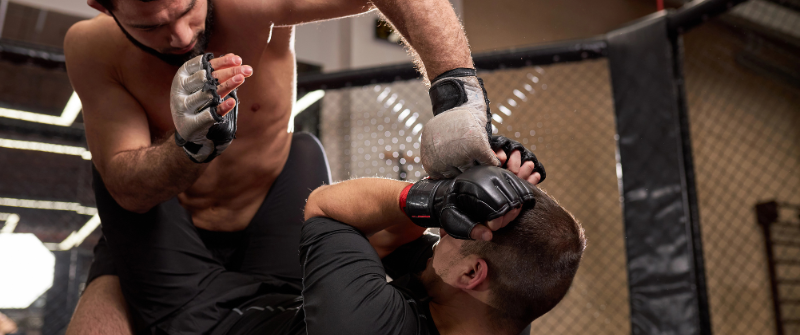
- by NEXO Team
- January 9, 2023
As exciting and rewarding as CrossFit training is, many enthusiasts turned gym owners assume operating a fitness business is easy. While for some, it is, but the truth of the matter is no amount of training can fully prepare anyone for the challenges they’ll encounter along the way, especially in light of the recent pandemic.
Operating a gym is productive and can be highly rewarding and lucrative, it takes a certain mindset and the right strategies to overcome obstacles specific to CrossFit gym owners.
Check out the 13 most common problems faced by CrossFit gym owners and some pointers on how to overcome them.
1. Competition
With CrossFit, it’s best to go hard or go home. Instead of analyzing the competition and trying to compete with the cream of the crop, many settle for mid-best. It’s not easy for CrossFit affiliates to market and attract new members to increase interest in their services.
Check out what the top competitors in the area are doing and come up with unique ways to make their strategies work for your fitness business. Mimicking what works for the leading competition enables CrossFit box owners to stay ahead of mid- and lower-range competitors, who are more likely to offer rock-bottom pricing and poor services and lose the support of the community as the market becomes saturated.
2. Business Model
CrossFit is a fitness movement and lifestyle. But it’s not the traditional business model many entrepreneurs are accustomed to. CrossFit offers affiliates a variety of tools, besides promotional events and materials and educational and training resources to support them on their path to success. Yet, it’s up to affiliates to come up with a business model that works for their business.
The key to CrossFit marketing is referrals. Today’s affiliates have an edge because they don't have to rely on word of mouth and reviews solely. Now, they can tap into social media to help bolster their online presence and reach a much wider and more diverse customer base from all over. In order to grow and increase memberships, CrossFit entrepreneurs need a business model that facilitates growth.
Affiliates have the freedom of using the CrossFit brand to create a name for themselves that matches their style as long as they remain consistent with the programming and adhere to certain guidelines.
3. Affiliate Certifications and Expertise

Certified CrossFit trainers belong to an elite class of fitness coaches and are widely considered the most knowledgeable fitness and nutrition experts in the world. But that reason alone doesn't automatically make them great business owners. Their competitive nature, passion for coaching, and drive to be the best by continuing to amass as many certifications and credentials as possible to improve their credibility in the fitness industry, and CrossFit community contribute to their success as gym owners as well.
4. Location
A prime location is invaluable. Not only does it make opening and managing a CrossFit gym and everything in between easier, but it also helps gym owners establish a solid base for all the CrossFit enthusiasts in the community to go to. The right location not only caters to those who are simply interested in going to the closest workout facility near them but also to those who are looking to find a “home.”
5. Marketing
CrossFit is a name unto itself, but there are plenty of things affiliates can do to market their gym. Get creative and add your brand to merchandise and equipment and promotional items. Host contests and giveaways, offer special pricing and new member packages to entice members new and old to become regulars, and experiment with additional services in addition to the core offerings.
Build up the culture at the gym by hosting competitions with members and other local gyms in the area, host corporate training and team building events, network and partnership with other gym owners, nutritional and food establishments, etc. These are among the many possibilities gym owners can use to market their business and its services with minimal effort and investment.
6. Finances
Running a gym can be expensive, with costs such as rent, utilities, equipment, and staff salaries. CrossFit gym owners should consider a variety of financing solutions and investors to help manage their monthly and annual operational expenses easier. A financial plan with a cushy rainy day budget is necessary that accounts for rent/lease fees, equipment acquisition/rental costs, maintenance and repairs, staff training, CrossFit insurance, and other expenditures that are necessary for operations.
7. Liability
Work hard, play harder is a mantra that keeps some of the most die hard CrossFit enthusiasts going strong. It’s also a source of motivation for box gym owners who are in it to win it. CrossFit encourages members and trainers to push themselves and discover higher limits everyday. While this is great for breaking barriers and achieving new heights in health and fitness goals, it also elevates liability risks for gym owners and affiliates.
Accidents and injuries are common in the fitness industry and even higher in the world of CrossFit. Members and trainers can become hurt from participating in training sessions, classes and even while working alone on equipment. There’s also the likelihood of members becoming injured from the actions of staff negligence and the actions of other members while on the premises.
Incidents that cause hard or damage to members like malfunctioning equipment, broken window glass, wet surfaces, faulty or damaged flooring, inadequate spacing etc. are also subject to owner liability too. CrossFit gym owners owe it to themselves, members, staff, and vendors to invest in CrossFit gym insurance that provides coverage for the unexpected legalities that could tarnish their business’ name, interrupt its operations, and decrease member retention and profits.
It’s not necessary to wait until something happens, that’s counterproductive. It’s best to shop for a credible CrossFit gym insurer and review coverage options that offer ample protection to offset the growing pains along the way.
8. Staffing
Finding and retaining qualified and reliable staff can be a challenge for CrossFit gym owners. It’s important to have staff and trainers who are the epitome of your gym’s goals and mission. Not only does it take effort and time to source the right talent, it also takes money.
Of course, it’s not enough to hire the best, you’ll also need to put forth the effort and resources into their development and success. Employee happiness, growth and development are critical for any business, especially in the CrossFit industry. Focus on providing staff with goals, rewards, motivation to give them direction as they overcome their weaknesses and develop/hone their skills and strengths. As business grows, so should the caliber of the staff at the gym so that everything runs smoothly and members have the ultimate experience.
9. Equipment

CrossFit gyms require equipment, but for many startups, knowing how much and what type of equipment to get is tricky. It’s important to start off with the essentials and to add different apparatuses and items as business grows. A good rule of thumb for owners to follow is to time gym equipment acquisitions with memberships to minimize maintenance and replacement costs and space.
Also, there’s no rush to invest in specialized gym equipment. Start small, so there’s always room to scale as time goes on. Rowing machines, jump ropes, barbells, kettlebells, pull-up bars, and climbing ropes are a good starting point for new CrossFit gym owners.
10. Trends and Services
CrossFit is synonymous with evolution and in order for CrossFit gym owners to succeed, they must stay current with the newest trends, workouts, training, techniques, nutrition guidelines, equipment, and services. Trends provide owners with invaluable insight into what members and customers actually want. The proof is in how the biggest names in the fitness industry managed to attract new members and increase profits by offering workout and training services on demand and on live streaming.
It’s important for CrossFit gym owners to research and embrace the trends and use them to their advantage. They should also be willing to pay attention to their analytics, and tweak and innovate things as they go for sustainable growth. Of course, it helps if they structure their business foundation properly during its inception to help minimize any growing pains they’ll encounter along the way.
Owners who pay attention to the trends are better capable of anticipating members' needs and can implement them into their operations in a timely manner.
11. Diversify revenue stream
The most successful CrossFit gyms have multiple sources of revenue streams, value-based pricing, and a rewarding and enriching training environment for trainers and members. Gyms that have staff and services to foster the right culture for members, have higher retention rates, various revenue streams and higher profit margins.
12. Toxic and Unpleasant Culture and Community
CrossFit is a community and it’s important for box owners to create the right culture and environment for members at their facilities. This requires careful planning and the right location, facility, and mix of services, equipment, staff, and core values to create the ultimate member experience for everyone, regardless of fitness level who walks through the doors.
Gym proprietors should regularly assess the environment at the gym, their staff and their attitudes, professionalism, demeanor, and work ethics to ensure they consistently mesh and build the brand. They should also keep a pristine facility, get to know members and staff so they are more than just faces, address staff and member concerns in a timely manner, and pay attention to their regulars and their habits.
If there is a steady, yet increasing number of regulars returning every month, that’s a good indicator of a good CrossFit gym community and culture.
13. Taking the Cookie Cutter Approach
CrossFit is a sport that caters to all ages, regardless of training experience and goals. Affiliates should steer away from making their gym and services too exclusive. Everyone who comes through the doors is a powerlifter. Therefore, it’s critical to consider the unique and diverse needs of all members, not just the regulars by providing equipment, solo and group classes and services for different exercise and training levels.
The above are some of the common problems faced by startup and long term CrossFit gym owners. The good news is that NEXO is a gym insurer that offers a variety of products and services to help.
To learn more about NEXO and how CrossFit professionals benefit from our insurance and concierge services,
or give us a call at .
Categories
Fill out a short form to contact us with your questions or to receive a customized quote.
Recent Posts
-
 NEXO’s Affinity Program: How Fitness Suppliers and Associations Can Partner for Profit and Protection
December 5, 2025
NEXO’s Affinity Program: How Fitness Suppliers and Associations Can Partner for Profit and Protection
December 5, 2025 -
%20(1).png) How to Insure an MMA Gym Without Paying for Coverage You Don’t Need
December 5, 2025
How to Insure an MMA Gym Without Paying for Coverage You Don’t Need
December 5, 2025 -
 Mastering Liability for Jiu-Jitsu Tournaments and Martial Arts Events
December 5, 2025
Mastering Liability for Jiu-Jitsu Tournaments and Martial Arts Events
December 5, 2025 -
 From Zen to Zoning: What Every Yoga and Pilates Studio Owner Should Know Before Signing a Lease
December 5, 2025
From Zen to Zoning: What Every Yoga and Pilates Studio Owner Should Know Before Signing a Lease
December 5, 2025 -
%20(1).png) Why Your Referral & Loyalty Program Can Impact Your Insurance Rates
December 5, 2025
Why Your Referral & Loyalty Program Can Impact Your Insurance Rates
December 5, 2025

